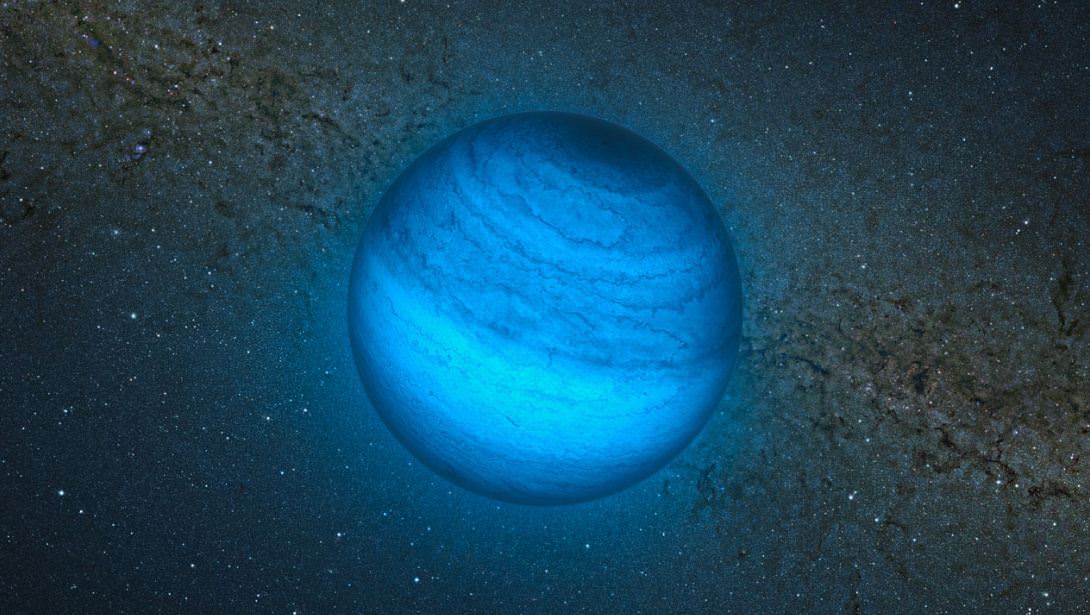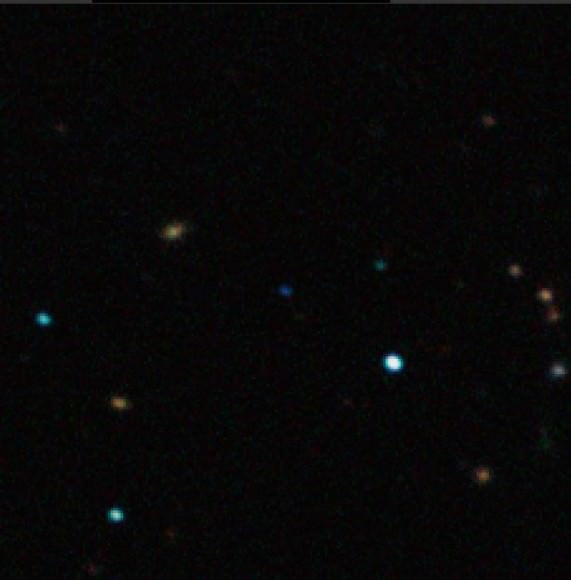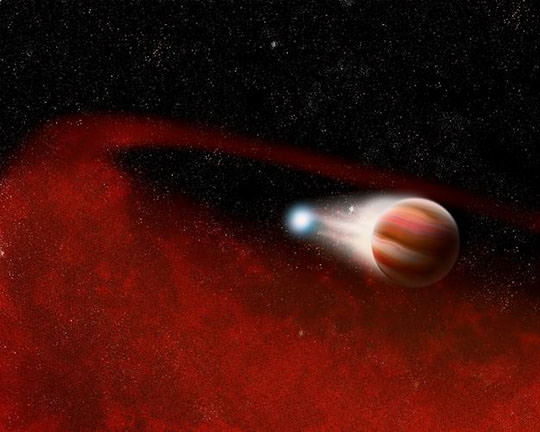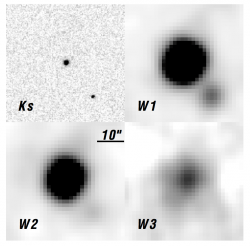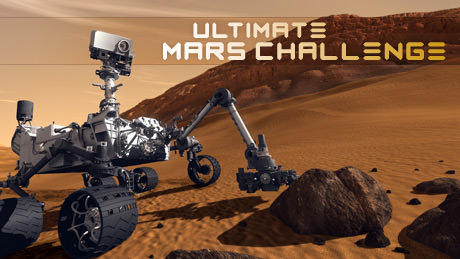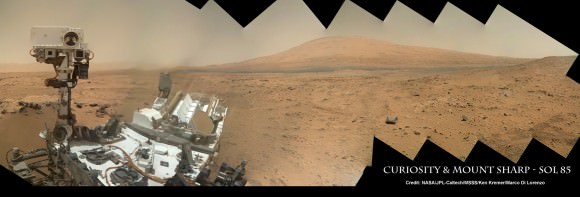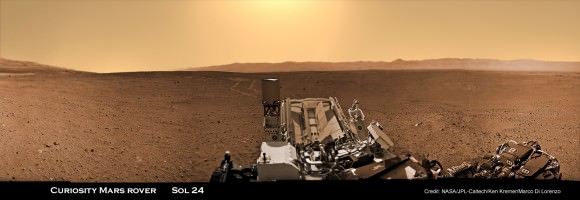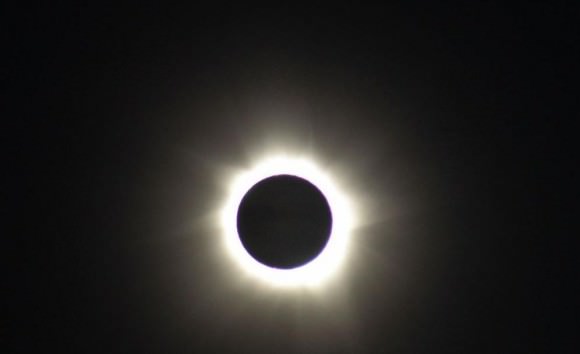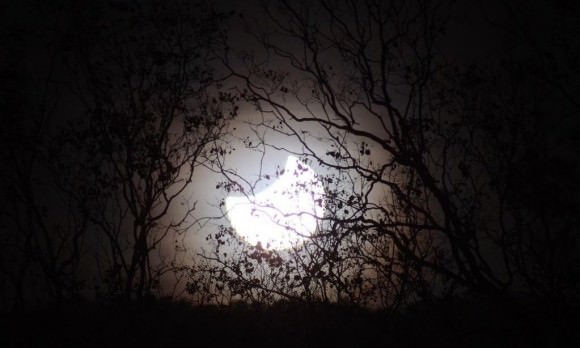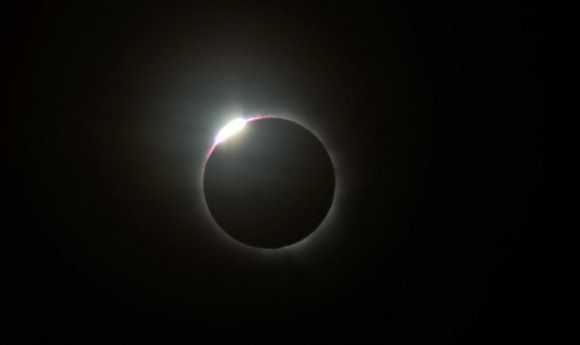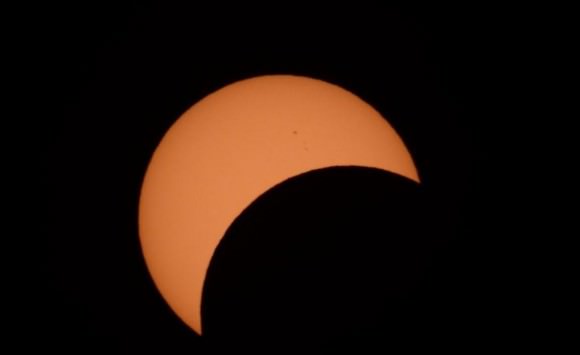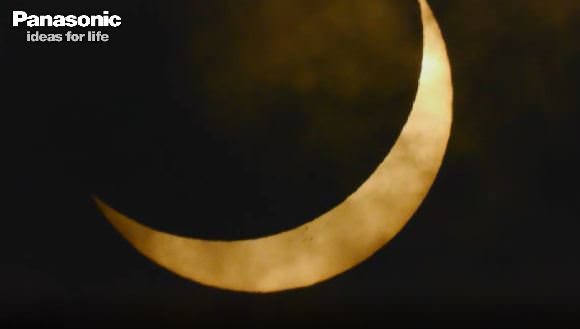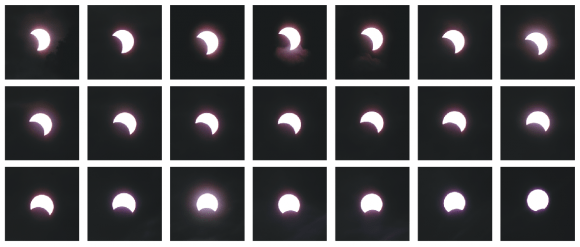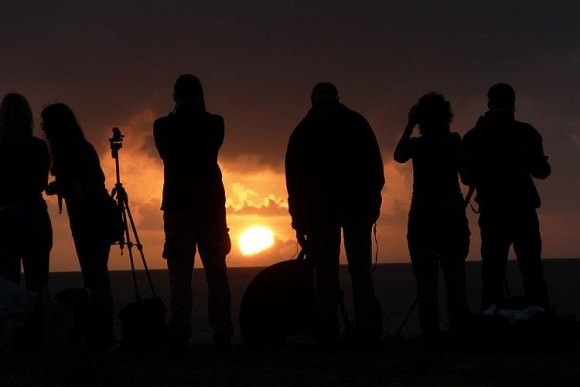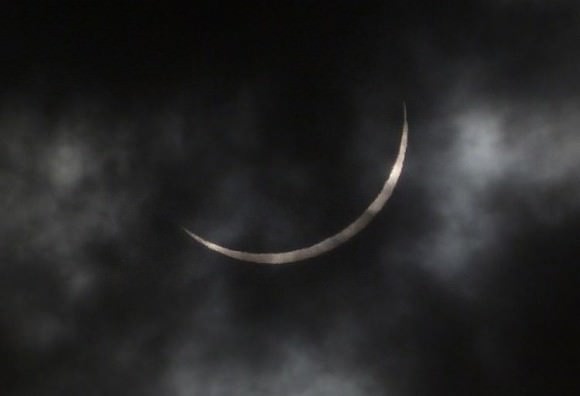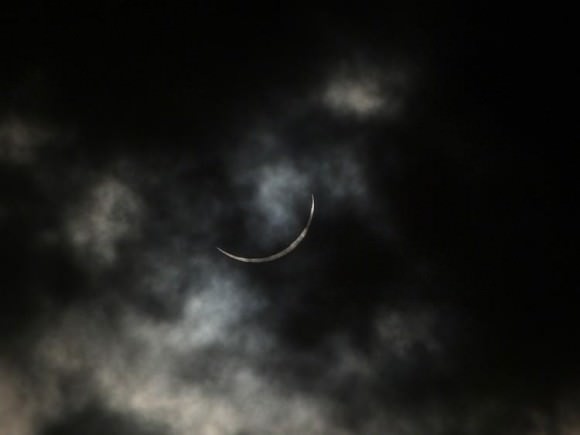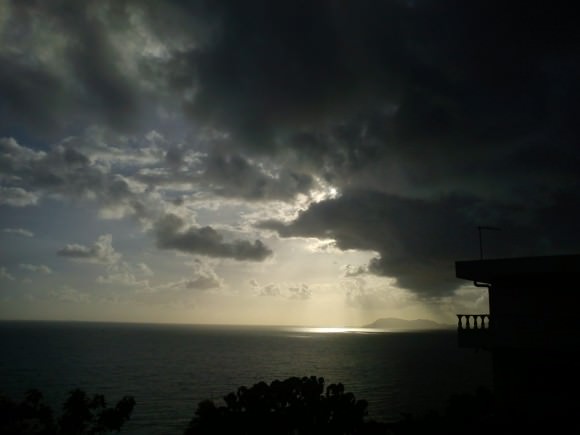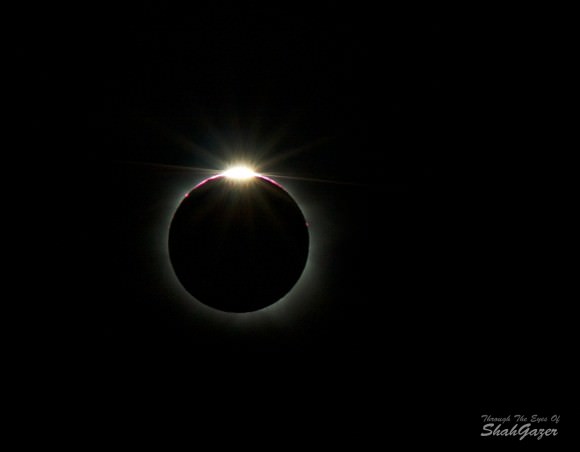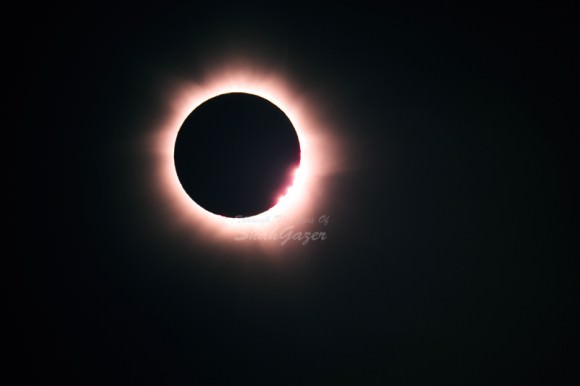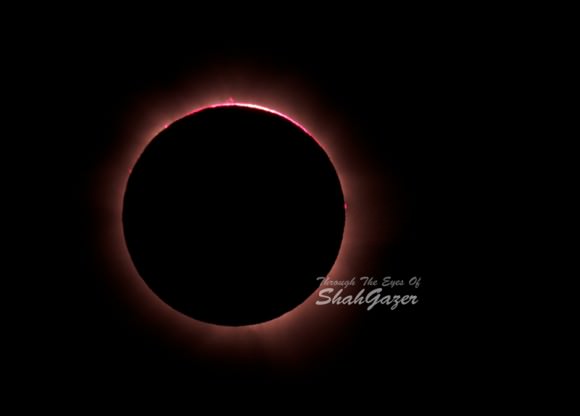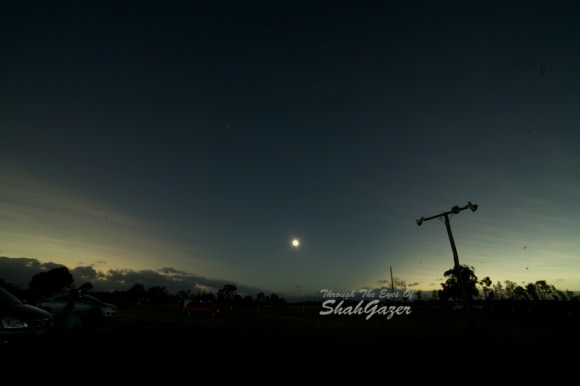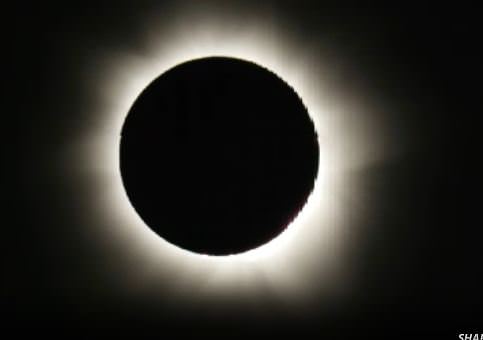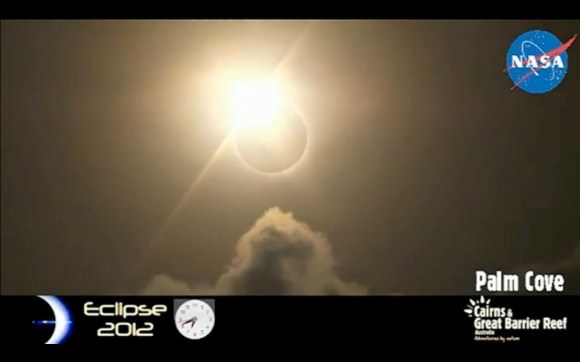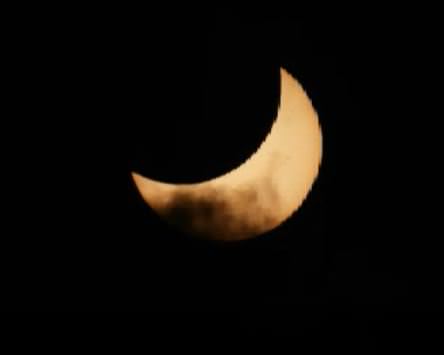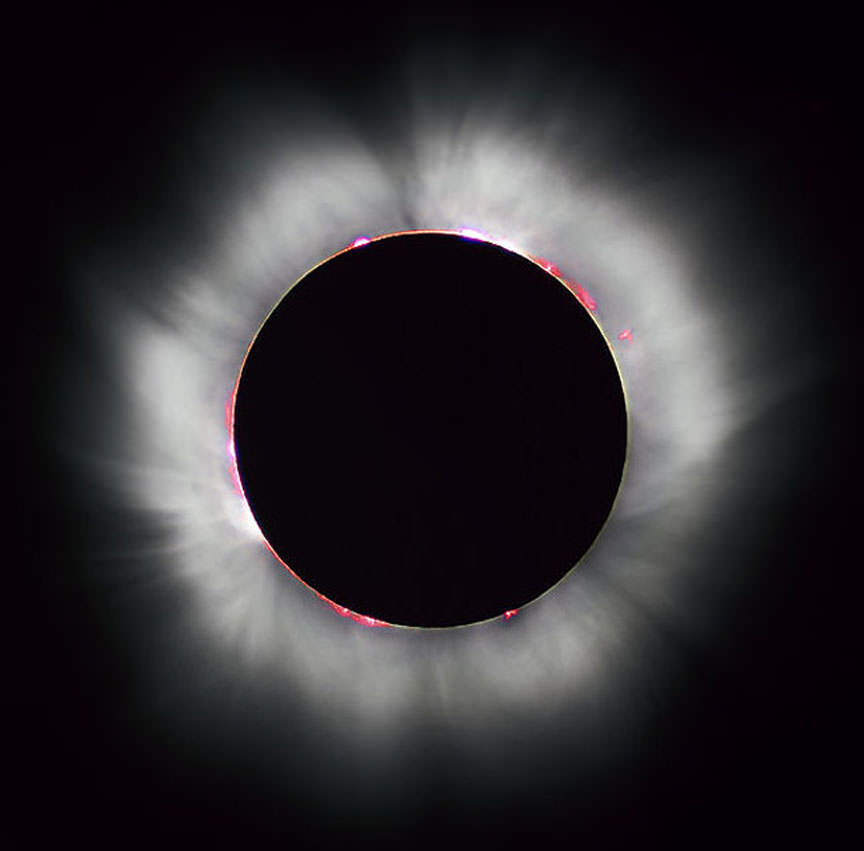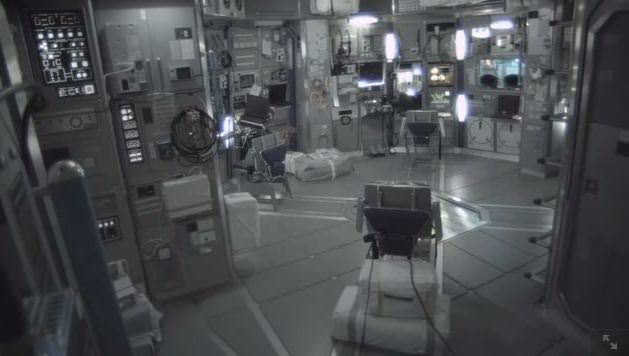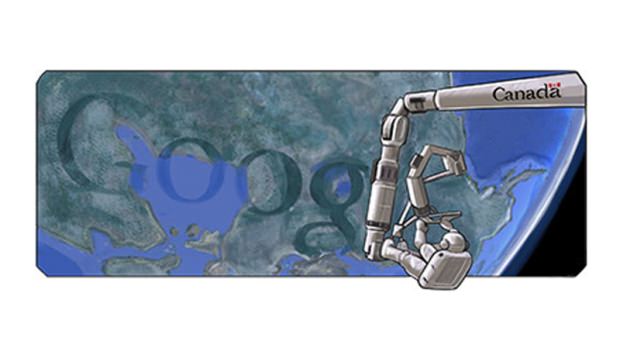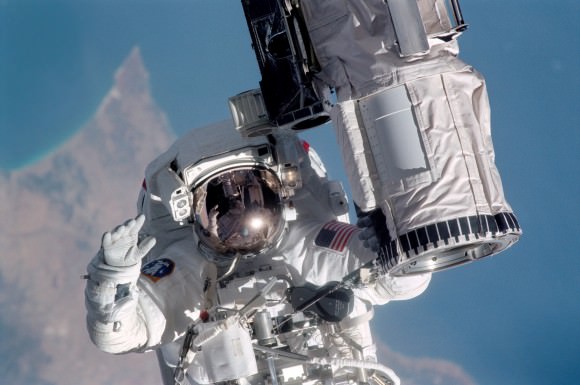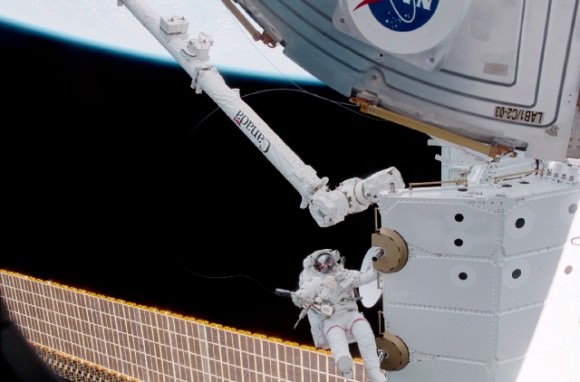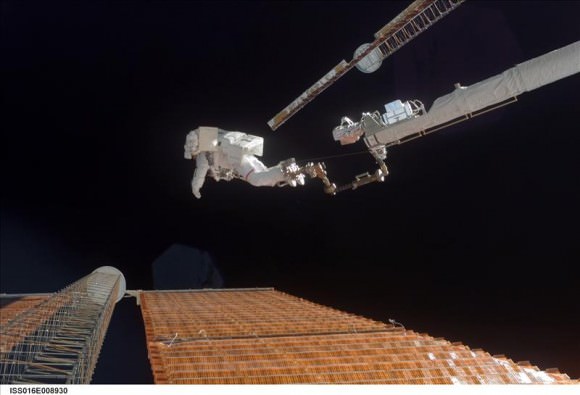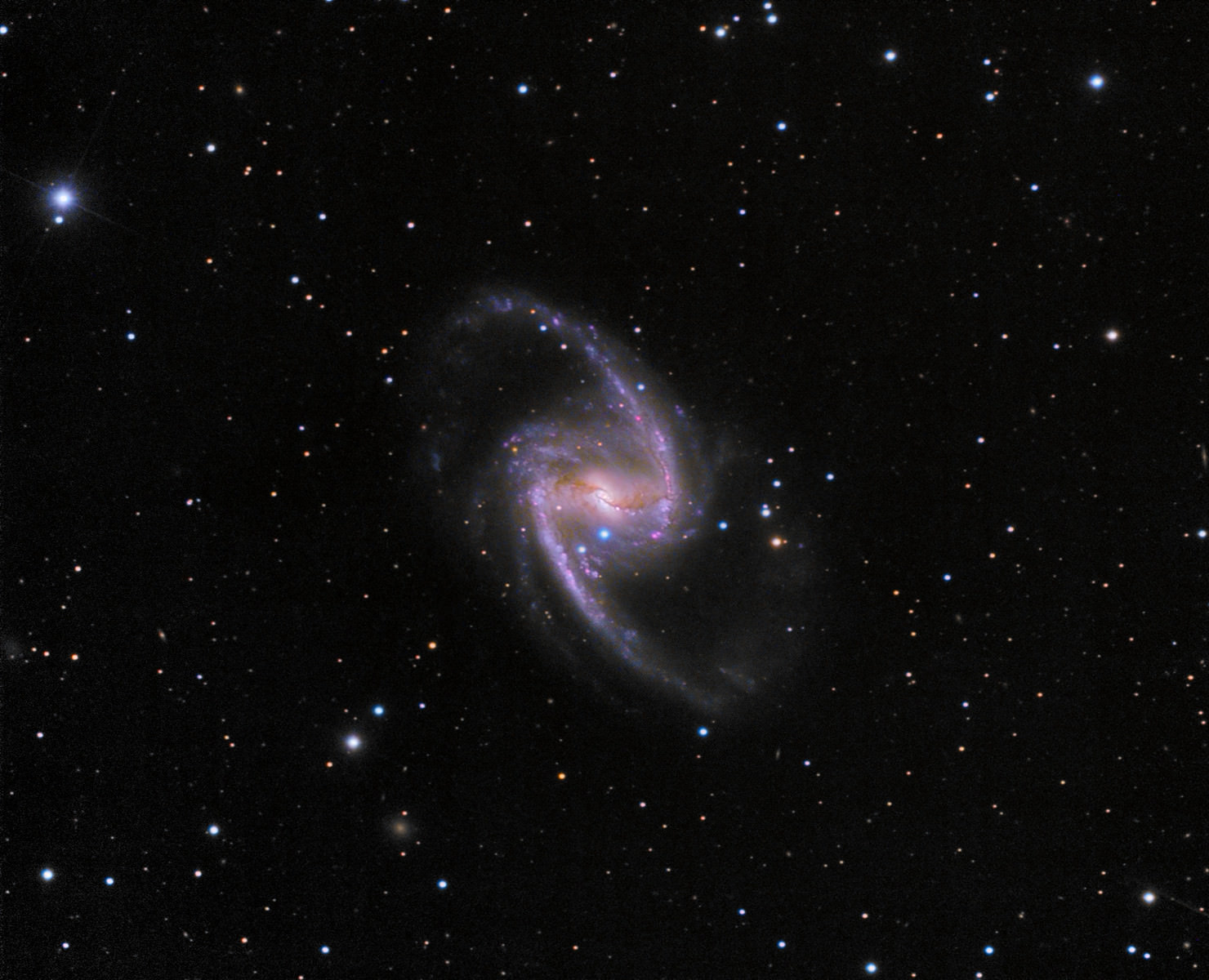This artist’s impression shows the free-floating planet CFBDSIR J214947.2-040308.9. Credit: ESO/L. Calçada/P. Delorme/Nick Risinger/R. Saito/VVV Consortium
Rogue planets – also known as free floating planets – are pretty intriguing. They are not orbiting a star but instead are wandering through the galaxy, having been either forcibly ejected from a solar system or having formed very early on in the Universe. While only a handful of these planets have been actually found, astronomers estimate these vagrant worlds could vastly outnumber stars. In fact, it’s been suggested there could be 100,000 times more rogue planets than stars in our Milky Way galaxy alone!
The latest rogue world to be found is exciting in that it is the closest such object to our Solar System so far. At a distance of about 100 light-years, its comparative proximity, along with the absence of a bright star very close to it, has allowed the team to study its atmosphere in great detail. Astronomers say this object gives them a preview of the exoplanets that future instruments will be able to find – and potentially take image of — around stars other than the Sun. But the planet also seems to be loosely tied to a roving group of stars, called the AB Doradus Moving Group.
The new rogue planet, with the ungainly name of CFBDSIR J214947.2-040308.9 (CFBDSIR2149 for short), was found using the Very Large Telescope and the Canada-France-Hawaii Telescope. The astronomers, led by Philippe Delorme from the Institut de planétologie et d’astrophysique de Grenoble, CNRS/Université Joseph Fourier, France, are calling the object a rogue planet candidate for now, as they want to study it further to confirm its free-floating status.
Moving star systems are equally intriguing. The AB Doradus Moving Group is the closest such group to our Solar System, and the stars drift through space together in a pack. They are thought to have formed at the same time. If the new rogue planet actually is associated with this moving group, astronomers say it will be possible to deduce much more about it, including its temperature, mass, and what its atmosphere is made of. There remains a small probability that the association with the moving group is by chance.
The link between the new object and the moving group is the vital clue that allows astronomers to find the age of the newly discovered object. Without knowing its age, it’s not possible to know whether it is really a planet, or a brown dwarf, a “failed” star that lack the bulk to trigger the reactions that make stars shine.
This is the first isolated planetary mass object ever identified in a moving group, and the association with this group makes it the most interesting free-floating planet candidate identified so far.
This closeup of an image captured by the SOFI instrument on ESO’s New Technology Telescope at the La Silla Observatory shows the free-floating planet CFBDSIR J214947.2-040308.9 in infrared light. This object, which appears as a faint blue dot at the centre of the picture, is the closest such object to the Solar System. Credit: ESO/P. Delorme.
“Looking for planets around their stars is akin to studying a firefly sitting one centimetre away from a distant, powerful car headlight,” said Delorme. “This nearby free-floating object offered the opportunity to study the firefly in detail without the dazzling lights of the car messing everything up.”
Free-floating objects like CFBDSIR2149 are thought to form either as normal planets that have been booted out of their home systems, or as lone objects like the smallest stars or brown dwarfs. In either case these objects are intriguing — either as planets without stars, or as the tiniest possible objects in a range spanning from the most massive stars to the smallest brown dwarfs.
“These objects are important, as they can either help us understand more about how planets may be ejected from planetary systems, or how very light objects can arise from the star formation process,” says Philippe Delorme. “If this little object is a planet that has been ejected from its native system, it conjures up the striking image of orphaned worlds, drifting in the emptiness of space.”
If CFBDSIR2149 is not associated with the AB Doradus Moving Group, the astronomers say it is trickier to be sure of its nature and properties, and it may instead be characterized as a small brown dwarf. Both scenarios represent important questions about how planets and stars form and behave.
“Further work should confirm CFBDSIR2149 as a free-floating planet,” said Delorme. “This object could be used as a benchmark for understanding the physics of any similar exoplanets that are discovered by future special high-contrast imaging systems, including the SPHERE instrument that will be installed on the VLT.”
This video shows an artist’s impression of the free-floating planet CFBDSIR J214947.2-040308.9. In the first part of the sequence the planet appears as a dark disc in visible light, silhouetted against the star clouds of the Milky Way. This is the closest such object to the Solar System and the most exciting candidate free-floating planet found so far. It does not orbit a star and hence does not shine by reflected light; the faint glow it emits can only be detected in infrared light. In the final sequence we see an infrared view of the object with the central parts of the Milky Way as seen by the VISTA infrared survey telescope as background. The object appears blueish in this near-infrared view because much of the light at longer infrared wavelengths is absorbed by methane and other molecules in the planet’s atmosphere. In visible light the object is so cool that it would only shine dimly with a deep red colour when seen close-up.
Read the team’s research paper here (pdf).
Source: ESO

